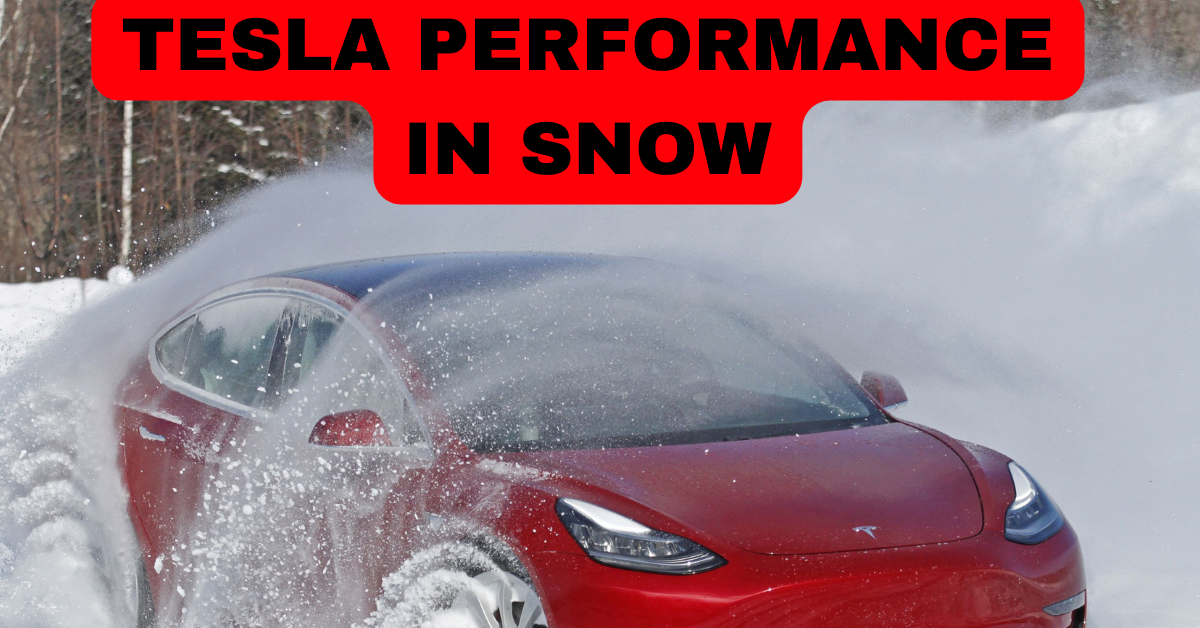Among the lineup of electric vehicles, the Tesla Model 3 has gained a lot of popularity. With its sleek design, advanced features, and impressive performance, it has become a favorite of many car enthusiasts.
However, one question that often arises is whether the Tesla Model 3 Rear Wheel Drive (RWD) is good in snow.
In this article, we will explore this question and examine the performance of the Model 3 RWD in snow.
What is Rear Wheel Drive?
Rear Wheel Drive is a type of drivetrain layout in which the power from the engine is sent to the rear wheels of the car.
This setup provides several advantages over other drivetrain layouts, such as Front Wheel Drive (FWD) and All-Wheel Drive (AWD).
RWD cars are known for their superior handling and balanced weight distribution. They also tend to be more responsive and offer better acceleration than other types of drivetrains.
However, RWD cars may have some disadvantages in certain driving conditions, such as driving in snow.
How Does the Tesla Model 3 Rear Wheel Drive Perform in Snow?
The Tesla Model 3 RWD has received mixed reviews regarding its performance in snow.
Some drivers have reported that the car handles well in snowy conditions, while others have complained that it struggles to maintain traction on snowy and icy roads.
The primary reason for this discrepancy is that driving in snow requires a different set of skills and techniques than driving in dry conditions.
Drivers who are experienced in driving in snow tend to have better control of their cars than those who are not.
How does RWD Tesla handle snow?
The Tesla Model 3 RWD comes equipped with a Traction Control System (TCS), which is designed to help the car maintain traction in slippery conditions.
The TCS uses sensors to monitor the speed of each wheel and adjusts the power output to each wheel to prevent skidding and loss of control.
The system works by applying the brakes to individual wheels to slow them down and redirect power to the wheels with better traction.
However, even with TCS, the Model 3 RWD may struggle in deep snow or on steep hills. In such conditions, the car may lose traction and slide sideways or get stuck.
It is therefore essential to take extra precautions while driving in snow, such as reducing speed, increasing following distance, and avoiding sudden maneuvers.
Can you drive RWD Tesla in the snow?
The Tesla Model 3 Rear Wheel Drive can be a good car to drive in the snow if the driver takes the necessary precautions and uses the appropriate tires.
The car’s Traction Control System can help maintain traction in slippery conditions, but it may not be enough in deep snow or on steep hills.
Switching to winter tires can significantly improve the car’s traction and handling in snow.
However, it is essential to note that driving in snow requires a different set of skills and techniques than driving in dry conditions.
Drivers who are experienced in driving in snow tend to have better control of their cars than those who are not.
Overall, the Tesla Model 3 RWD is a capable car that can handle a variety of driving conditions, including snow.
It offers impressive acceleration, responsive handling, and advanced safety features. However, as with any car, it has its limitations, and drivers must be aware of these limitations when driving in snow.
One potential disadvantage of the Model 3 RWD is its weight distribution. Since the car’s batteries are located beneath the cabin, the weight is heavily concentrated in the rear of the car.
This can make the car more prone to oversteering, which can be dangerous in slippery conditions. However, the car’s electronic stability control and Traction Control System can help mitigate this issue.
Another consideration is the driver’s level of experience and skill. Driving in snow requires a different set of skills than driving in dry conditions.
Drivers who are inexperienced in driving in snow may struggle to control their cars, regardless of the type of drivetrain or tires.
It is therefore essential for drivers to educate themselves on snow driving techniques and practice these techniques in a safe and controlled environment.
In conclusion, the Tesla Model 3 Rear Wheel Drive can be a good car to drive in the snow if the driver takes the necessary precautions and uses appropriate tires.
The car’s advanced features, including its Traction Control System and electronic stability control, can help maintain traction and control in slippery conditions.
However, drivers must also be aware of the car’s limitations and their own level of experience when driving in snow.
By taking these factors into account, drivers can enjoy the impressive performance and capabilities of the Tesla Model 3 RWD in a variety of driving conditions, including snow.
Tips for Driving the Tesla Model 3 RWD in Snow
Another factor that can affect the performance of the Model 3 RWD in the snow is the type of tires used.
The car comes with all-season tires, which are suitable for most driving conditions but may not provide sufficient grip in snow and ice.
Switching to winter tires, which are designed to handle cold and slippery conditions, can significantly improve the car’s traction and handling in snow.
Winter tires are made of a softer rubber compound that remains pliable in cold temperatures, allowing them to maintain a grip on snow and ice.
They also have deeper treads and more sipes (small slits in the tread) that create more biting edges and improve traction.
Many Tesla owners have reported that switching to winter tires has made a significant difference in the car’s performance in snow.








